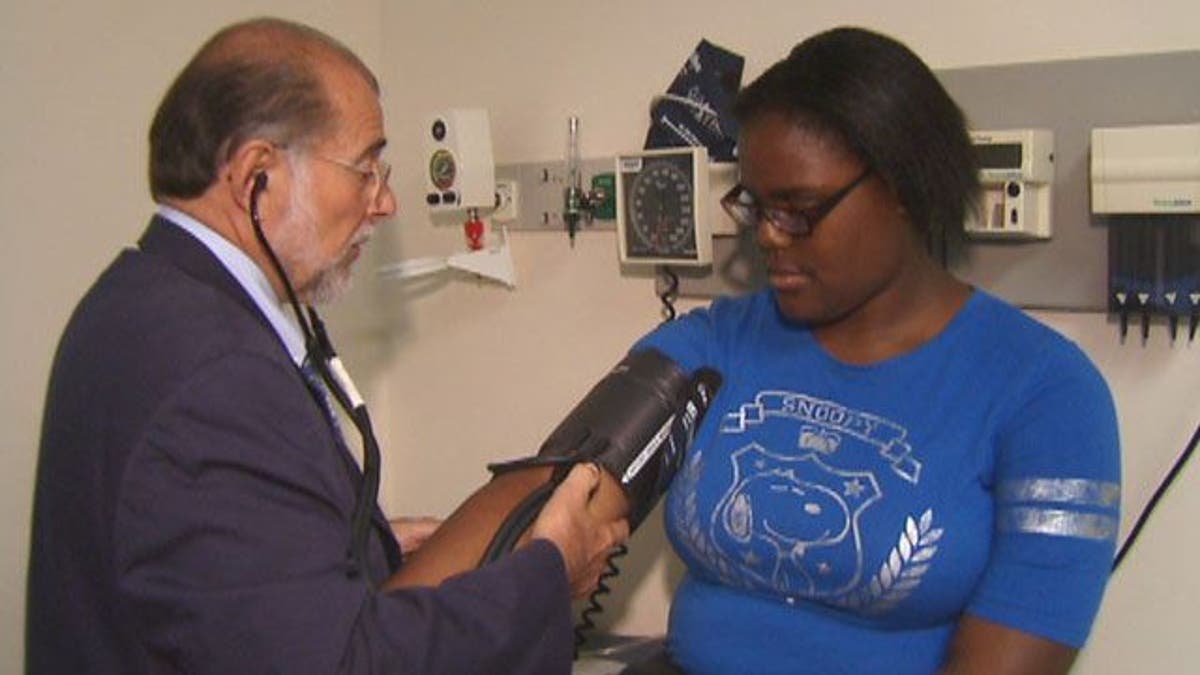
Programs designed to prevent obesity in children may help lower kids' blood pressure, according to a new review of past studies.
Researchers found that programs targeting both diet and physical activity were more effective than programs that focused on one or the other.
Although it's generally thought of as a disease of middle-aged and elderly people, children can also develop high blood pressure, or hypertension. The American Heart Association recommends that children have yearly blood pressure checks, saying that detecting high blood pressure early will improve a child's health.
Dr. Bonita Falkner told Reuters Health that in the U.S., at least 3.5 percent of children and adolescents have hypertension and another 3.5 percent are at risk because of slightly elevated blood pressure.
Falkner studies hypertension at Jefferson Medical College at Thomas Jefferson University in Philadelphia and was not involved in the new review.
High blood pressure is more common among children who are overweight and obese, so the authors of the review wanted to see if obesity-prevention programs also improved blood pressure in kids.
"Blood pressure during childhood can track into adulthood, and when kids have elevated blood pressure they are more likely to have hypertension when they become adults," coauthor Dr. Youfa Wang told Reuters Health in an email.
Wang, from the University at Buffalo, State University of New York, said the new review is part of a larger comprehensive study on childhood obesity funded by the Agency for Healthcare Research and Quality (AHRQ). The project also includes researchers from the Johns Hopkins Bloomberg School of Public Health in Baltimore.
Wang and his colleagues analyzed data from 23 studies of obesity interventions, including almost 19,000 kids in total. The interventions targeted diet, physical activity or both and lasted at least one year, or six months for school-based programs.
Studies compared children who received a particular intervention with those who did not. In the majority of studies, children were randomly assigned to go through the obesity-prevention program or to be in a comparison group.
The 23 studies tested a total of 28 different interventions. Most of them were done in schools or in combined school and home settings.
Four of the interventions showed positive effects on both body fat and blood pressure. Eleven suggested a beneficial effect on blood pressure, but no effect on body fat.
Wang and his colleagues then combined the findings of 19 studies that reported on systolic blood pressure (the top number in a blood pressure reading) and 18 that reported on diastolic blood pressure (the bottom number).
They found that obesity prevention programs reduced blood pressure among children, by an average of 1.64 millimeters of mercury (mm Hg) in systolic blood pressure and 1.44 mm Hg in diastolic blood pressure.
The reduction was more pronounced in the studies that used a combined approach with both diet and physical activity interventions, the authors wrote in Circulation.
"It's not a huge impact, but the totality of the data that they looked at with the analysis of multiple projects seemed to be optimistic," Falkner said.
"So it's hopeful that some impact can be achieved," she said. "No one really lost a lot of weight but at least with the efforts there was some decrease in blood pressure."
Falkner said measuring blood pressure has become a standard part of children's medical care, just like measuring height and weight. But deciding what's normal and what's high blood pressure is more complicated than it is in adults.
"In adults, generally, there is an accepted standard of 140/90 (mm Hg), which is the cut-off point," she said. "If blood pressure goes beyond that it becomes a risk factor for cardiovascular diseases."
For kids, on the other hand, assessments are based on how their blood pressure compares to other children of their age, height and gender.
Treatment depends on how high the blood pressure is, Falkner said.
"If it's markedly elevated then the doctors generally do some testing to see if there's some underlying cause for the high blood pressure," she said.
She said there are things parents can do that are beneficial for kids' blood pressure, such as helping them lose weight if they're overweight or obese.
Dietary changes such as reducing sodium or following the DASH diet could help, she added. DASH stands for Dietary Approaches to Stop Hypertension.
"The DASH diet is kind of like the Mediterranean diet," Falkner said. "It's rich in fruits and vegetables, fiber and low-fat dairy."
"The idea behind this is that there are multiple nutrients that are beneficial for the cardiovascular system," she said.
